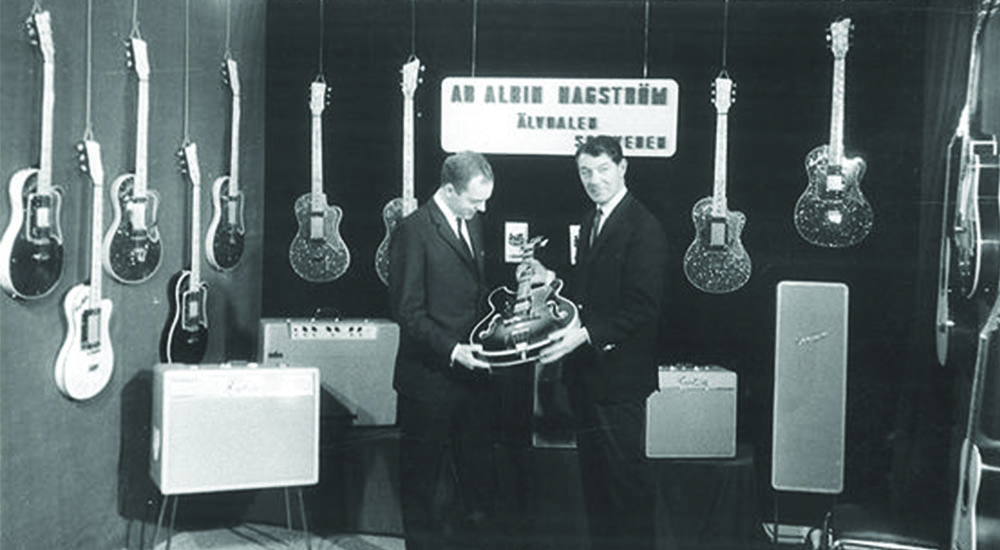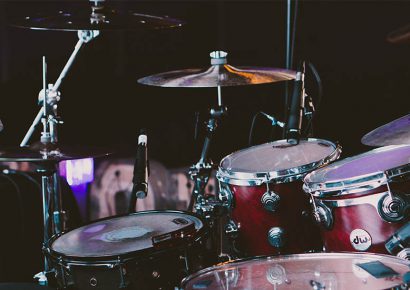“One of the missions that I had coming into the company was to raise the profile of Hagström in markets outside of Europe, and obviously that’s where Australia fits in,” says Shand. “We’re being very methodical to find the right partner for the brand. We’re looking for people who understand the history and the quality and are able to be pioneers for us in markets where Hagström may not have a history that goes back a long time.”
Part of this effort involves overcoming the erstwhile lack of recognition for Hagström in markets outside of central Europe and North America.
“The factory in Sweden had closed down in 1983, so it had been gone for about 22 years,” Smith says. “Some people remembered it, but a lot of young players had never heard of it. So it was having to start right from the beginning in some aspects and dig into the past, but then revitalise everything.”
Smith came into the picture in 2007 and Hagström has since made considerable advances with both product development and brand exposure. But they haven’t been in an unnecessary hurry.
“Quality has been a really important issue for us – working with suppliers and with the factories to make sure that everything is done the way that we want it done,” Smith says. “It’s [about] being patient and just making sure that we’re following through with developing a really great product for a reasonable amount of money.”
Aiming to become a global presence hasn’t slowed down product development, mind you. Rather, Hagström has remained open to design ideas that will appeal to modern guitarists while also retaining the brand’s signature character.
“Our Ultra Swede model for example, which is smaller bodied, has ceramic pickups, [a] higher output, [and a ] more modern, very thin neck – that’s a combination of some of the classic Hagström features into a platform that’s a little bit more suitable for a particular style of shredding player,” Shand says.
“In the last two years we’ve also had a project that actually looks back. We call it Retroscape. That involves the reintroduction of the original classic Hagström models from the 60s. The relaunch of the Impala and Condor and H-II and H-III, they’re new to the current lineup, but they’ve very authentic recreations of these older Hagström models.”
“We never really feel like we’re finished with something,” Smith says. “We’re always looking to make improvements and we’re making changes to the line all the time.”
“Next year will be our 60th year. Hagström started making electric guitars in 1958. That long history gives us a level of authenticity that some of the newer brands may not have and also a source of original product design that we can draw on for reintroduction.”
On that note, some intriguing items are set to be added to the Hagström product line in the near future. “We’ll be seeing a couple of bass models later this year that are original Hagström designs,” Shand says. “One was dating back to 1967 and another one was done in the 80s for ABBA. Both of them are very, very cool bass designs.
“At [the musical instrument fair Frankfurt Musikmesse] we are launching a brand new body shape for Hagström under the model name Fantomen, which is Swedish for the phantom. It’s an offset, irregular shaped body that we’re collaborating on with a big band.”
Hagström has relationships with a variety of contemporary musicians, but there’s one key factor that differentiates these relationships from that of other big name guitar brands.
“Because we’re small we don’t have a custom shop,” Shand says. “So the guitars that Pat Smear plays on stage with the Foo Fighters, the guitars that Justin York and his brother Taylor will be touring with when Paramore comes back out – they’re right from the factory. That means the instrument that’s on stage with Pat or with Paramore is the instrument that kids walking into the shop will be able to buy.
“Kevin Parker from Tame Impala, he’s been playing a Hagström vintage Impala. We shipped him a couple of Impalas that he just picked up and he’s recording his next album with them.
“Hagström guitars aren’t cheap, but they are reasonably priced. We don’t cut corners in terms of quality. Even our entry level models that sell for $350-400, they’ve got the original Hagström truss rod, the original Hagström tailpiece. We’re not going generic. There’s a lot of care and detail built in.”
Hagström are distributed in Australia through Pro Music Australia.

